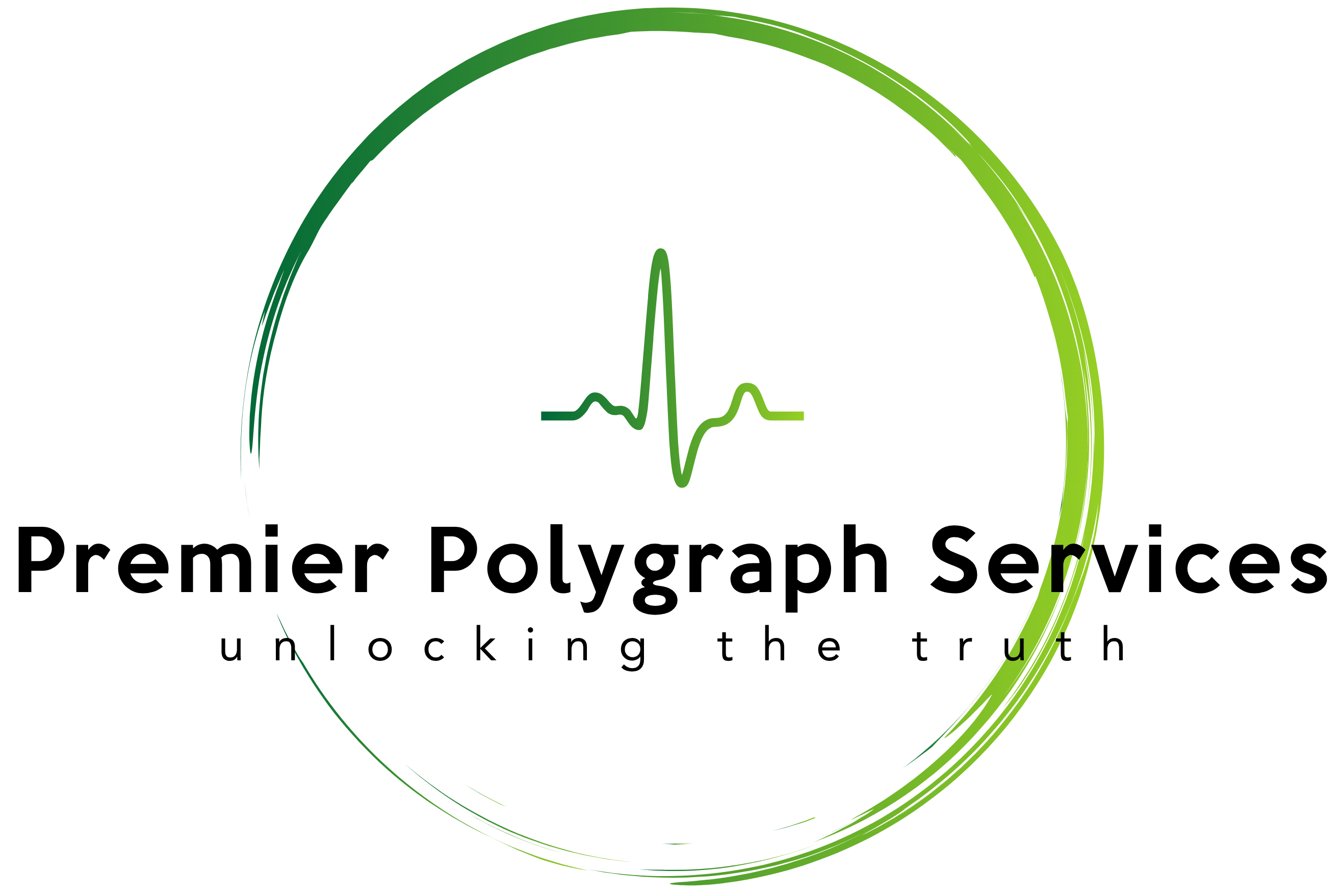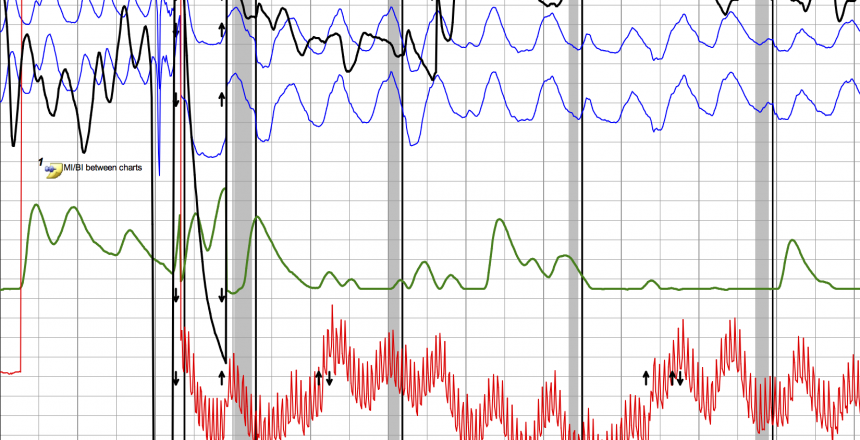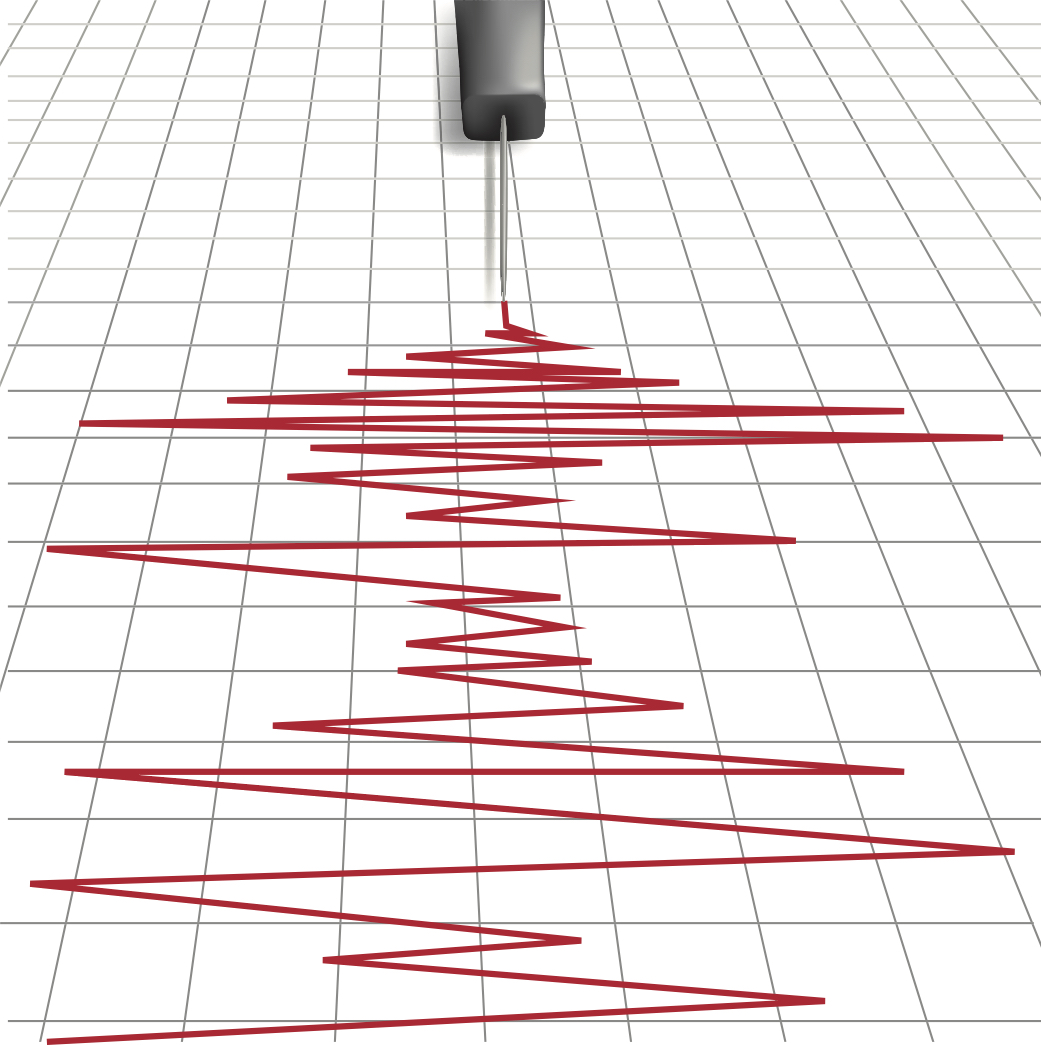For most people all they will know about a lie detector test is what they have seen on TV, some shows will undertake a genuine test, however the vast majority employ selective sensors and clips for entertainment purposes only. The goal of a lie detector is to see if the person is telling the truth or lying when answering questions relating to a particular scenario.
When a person takes a polygraph test, sensors are attached to him/her. A polygraph is a machine in which the multiple (“poly”) signals from the sensors are recorded digitally on the examiners computer. The days of having a long strip of paper moving under needles are long gone. Please do not take a test with someone still using analog equipment.
Some of the physiological movements you will have measured during attest are:
Your breathing rates
Are measured using Pneumographs, one of them will be placed around you just below your heart, and the other with be placed just above your heart. We’ll be measuring your abdominal and thoracic breathing during the test. The Pneumographs won’t be painful in any way, but can be a littleuncomfortable. Your Examiner will adjust then to make them as pleasant as possible.
Cardiovascular
Too measure your cardiovascular activity we use a standard blood pressure cuff, exactly the same as you would have had at your Doctors. At the start of each test the cuff will be inflated to around 1/3 of what your Doctor would do and it will stay inflated for the duration of the test. Fortunately, each test only last around 5 minutes. Some clients have found the cuff a little uncomfortable and have reported that they feel their fingers begin to tingle. All have said things return to normal as soon as the air is let out.
Your blood flow rate
For this we use a Plethsmograph, a highly sensitive device that measures minute changes in blood flow.
Your perspiration rates (EDA)
Sensors will be placed on either the palm of your hand or your fingertips. The aim is for the sensors to pick up minute changes in perspiration on the surface of your skin. Also known as EDA (Electrodermal activity) So what is it and how can it be measured?
The combined changes between electrodermal resistance and electrodermal potential make up electrodermal activity. Galvanic skin resistance (GSR) is an older term that refers to the recorded electrical resistance between two electrodes when a very weak current is steadily passed between them.
Sometimes a polygraph will also record things like arm and leg movement via a motion sensor.
When the polygraph test starts, the questioner asks three or four simple questions to establish the norms for the person’s signals. Then the real questions being tested by the polygraph are asked. Throughout questioning, all of the person’s signals are recorded digitally. The days of a long scroll of paper and moving needles are long gone.
Both during and after the test, a polygraph examiner can look at the graphs and can see whether the vital signs changed significantly on any of the questions. In general, a significant change (such as a faster heart rate, higher blood pressure, increased perspiration) indicates that the person is lying.
While they are not 100 per cent accurate, they are said to have a high accuracy level.
Evidence from lie detectors is generally not accepted in criminal court in the US and most of Europe. However, probation officers in the UK reportedly use polygraphs to monitor serious sex offenders. Problems arise if the person is fearful, angry or surprised as that can influence the results.
Polygraph test process/ what you can expect on the day of the Polygraph test.
The process is made up of three main section, and normally takes between 1.5 and 2 hours, namely
Pre-test interview The test itself
Post test discussion.
Pre-test interview.
This is your opprtiuny to make sure the person doing your test fully understands what it is you dealing with. Because ever polygraph test is strictly private and confidential, you should feel free to share as much information as is appropriate at this stage. In turn the examiner will be using this time to come up with the best way to structure the questions for your test.
The key to remember, is the more information your examiner has at this stage of the test the more he/she will be able to help you get the best result. The examiner will also ask a lot of question about the issue you dealing with to make sure they fully understand what they dealing with.
During this stage the examiner will guide you on what question to ask and how best to ask them. This part of the discussion normally starts with the examiner asking you what question have you thought you might want to ask.
The test itself.
While setting up the test instruments the examiner will talk you through what each if the sensors do. ( please see sensors on my site for more information)
This stage is broken into two parts
1) The acquaintance test or familiarization test.
Normally this will involve the examiner asking you to write down a number between 1-5. You will then be attached to the instruments and asked. Regarding the number you wrote down, was it number 1 and so on for 2, 3, 4 and 5. You asked to reply no to all the questions including the number you actually wrote.
There are a number of reasons for this. Firstly, it gives you a chance to see what it’s like to be connected to all the sensors. It also gives you a chance to see what’s it’s like to have the examiner askyou question and the speed at which the question will be asked (normally slow)
This phase can help in reducing any nerves you might have before the test. You don have to worry about the acquaintance test, you can’t fail this part of the test. this part of the test is also useful for the examiner to see what you physiology looks like when you lie (you would have lied about the number you wrote down) and to make sure he/she is getting good data reading from all of the sensors.
Warning-you should refuse to continue with a test if your examiner says you don’t need anacquaintance test.
2) The second part of the test is the test itself. While you remain attached to the instruments, the examiner will ask you all of the questions you have agreed to be asked during the pre test stage. (there are no surprise question is Polygraph testing)
The test itself must be run a minimum of three times and possibly five depending on the quality of the data being gathered.
Warning– if your examiner only runs the test once the results are not valid and you should request a refund.
3) Post test discussion.
Most examiners will talk you through the findings from the test and give you a further chance to discuss anything that might have influenced the results. This is the subjects opportunity to discuss anything that he/she feels might have influenced the results. Assuming there was nothing influencing the test, the examiner will normally be able to give you the results there and then. The examiner will only require a short amount of time to grade the charts.
In some cases, the examiner will want to present the results at a later stage, this is nothing to be concerned about.


